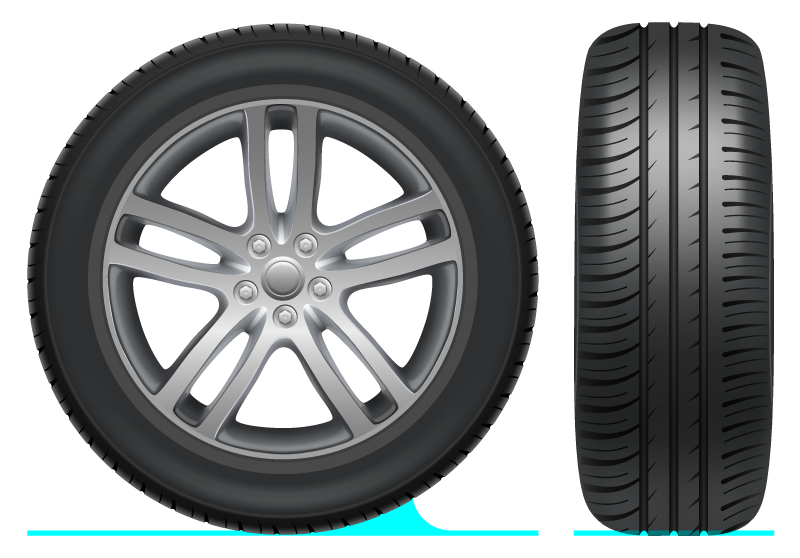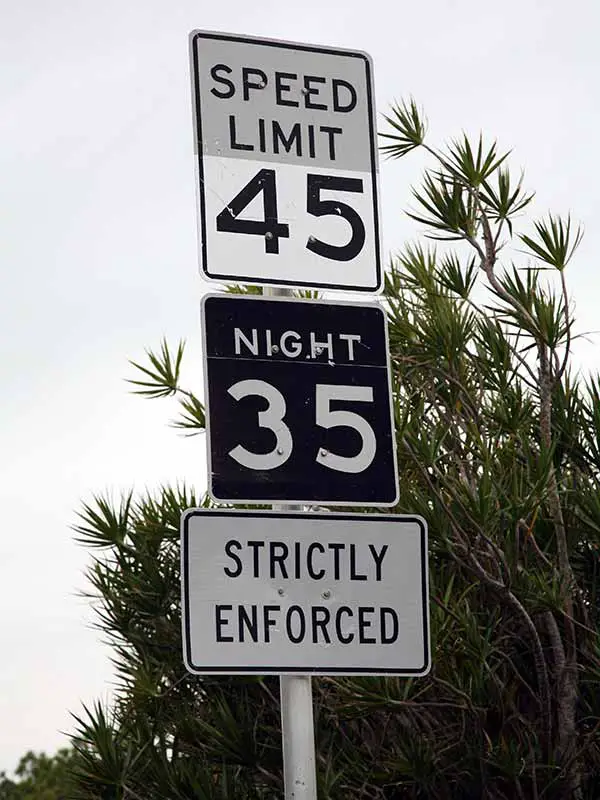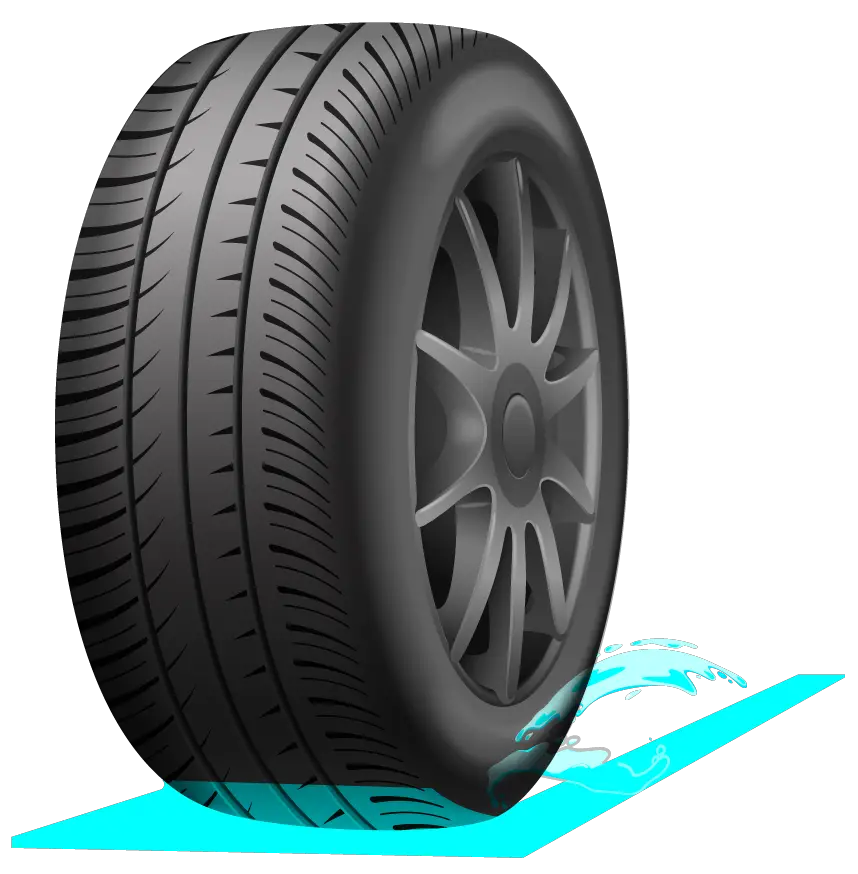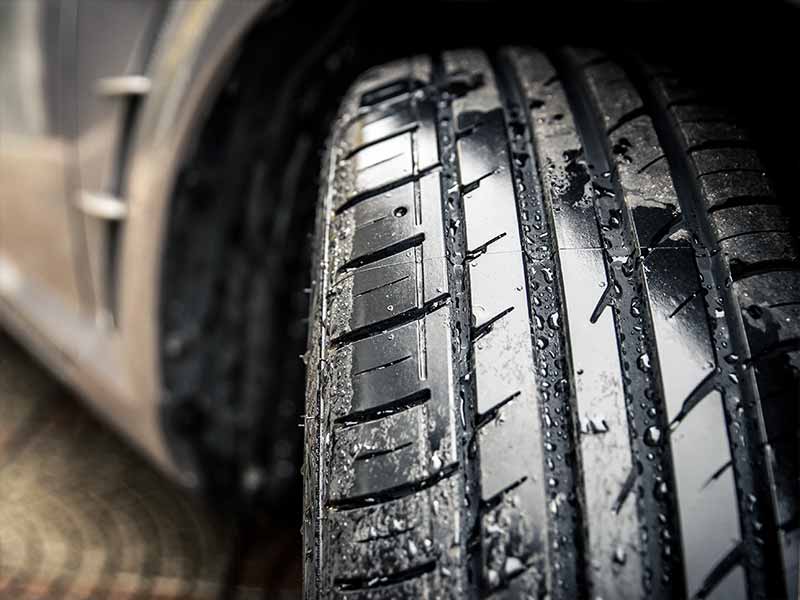Driving in the rain and other bad weather can be nerve-racking. Many drivers encounter this every year, and it is the cause of many accidents. If you’ve never experienced the terror of hydroplaning and the loss of contact with the road, consider yourself lucky.
How Much Rain Does It Take To Hydroplane?
Only 1/10″ to 1/12″ of rain on the road can cause hydroplaning. The amount of rainfall your particular car or truck will resist hydroplaning in depends on water depth, your speed, and the amount of tread wear.
It’s possible to reduce the risk of hydroplaning and even avoid it if you know its causes and circumstances.
Let’s take a closer look.
Hydroplaning & Water Depth
Water depth is the most significant contributing factor when it comes to hydroplaning. Your tires are designed to channel water from underneath on wet roads, but they can only channel away just so much.
If there is too much water on the road surface, the grooves in the tread pattern of your tires will not be able to channel the water out from underneath themselves fast enough. The result is that the water in front of your tires has nowhere else to go. It builds up in front of the tire until something has to give.
Eventually, the force of the water and the tire meeting without an escape path causes the tire to lift and glide across the water, similar to a skim border at the beach. The tire will begin hydroplaning until there is no longer enough water to hydroplane on or you have slowed down enough to regain traction with the pavement.

Light rain is usually not a problem for most tires with deep enough tread grooves. But even the best tires can’t deal with deep water beyond the amount the tread pattern can allow water to flow through.
Medium to heavy rain and standing water can quickly overwhelm your vehicle’s tires, causing you to lose traction and begin hydroplaning. The amount of water required for hydroplaning varies depending on the tread depth and vehicle speed.
Instead, the water will pool in front of your tire and eventually create a layer between your tire and the road. As a result, your tires will lose traction, so that you won’t have any control.
Hydroplaning & Vehicle Speed
How quickly you are driving in the rain or on wet roads has as much or more effect on when hydroplaning occurs than the amount of water on the road surface. The faster you drive, the more water must flow through the tread grooves.
Driving more slowly is the most effective way to reduce your risk of hydroplaning. There still needs to be enough water to cause hydroplaning, but if you go slow enough, you will not hydroplane.
The one factor that you have the most control over is your vehicle speed. If you’re driving faster, you’re more likely to hydroplane.
Remember, the posted speed limit signs don’t require you to go at least that speed. When driving conditions and visibility are wrong, it’s OK to go under the speed limit — especially when driving through heavy rain.
Going slower will give you more time to react, giving your tires a better chance of channeling water away from your under your tire’s contact patch.
Be mindful of the cars ahead and behind you in rainy conditions. You’ll want to try to maintain some distance from the vehicles around you if you are concerned you may begin to hydroplane.
Slowing down to a speed slightly slower than the surrounding traffic is a good safety tip since the other drivers are not likely to experience hydroplaning. Reducing the speed will give you more of a buffer.
It’s important to understand that driving too slowly or stopping in the roadway can also be quite dangerous. If you slow down too much, you risk becoming a hazard to the other drivers, which can result in an accident. The other drivers expect the cars and trucks they share on the road to maintain a reasonable speed.

Hydroplaning & Tread Depth
Tread patterns are designed to channel water out from underneath the contact patch of your tires. When your tires are new, they have the deepest tread grooves and can flow water out from underneath them quite well.
As your tires wear down over time, this tread groove becomes shallower and shallower, and your tires slowly lose their ability to funnel water out and away from underneath your tires.
When your tire tread has worn down to the legal minimum in most states of 2/32″, stopping distances on wet roads will have increased dramatically, and your tire’s ability to resist hydroplaning will have extremely deteriorated.
We recommend replacing your tires once they have worn down to 4/32″. The amount of money you can save by allowing them to wear down to 2/32″ doesn’t outweigh the loss of traction due to puddles and standing water.
New tires lose performance slowly at first. When they reach the lowest tread levels allowable, a small amount of wear will make a much more significant difference in traction on wet roads.
The difference in a new tire tread depth of 10/32″ and 8/32″ is trivial. However, the difference at lower tread depths of 4/32″ to 2/32″ can be the same as all of the performance lost by your tires wearing down from 10/32″ to 4/32″.
Even brand-new tires that are the best at preventing hydroplaning can still become overwhelmed by too much water and speed. Your tire’s tread can make a huge difference in how much water it can handle and at what point hydroplaning can occur, but tires alone can’t prevent hydroplaning.
You should always use caution in rainy weather and do your best to avoid a hydroplaning situation and drive safely. Watch out for standing water and reduce your speed.
How To Avoid Hydroplaning
Now that you know how hydroplaning occurs, we’ll discuss some helpful tips to help you avoid a hydroplaning situation.
Slow Down
The biggest tip to remember is to reduce your speed. Vehicle speed is the one factor you control at the moment that can significantly reduce your risk of hydroplaning and losing control. It’s always better to slow down in rainy weather.
Don’t let nearby drivers or speed limit signs influence you when it’s raining: use your gut and only go as fast as you feel comfortable going. If your car starts to vibrate or lose control, remove your foot from the accelerator and coast to a lower speed.
Avoid Standing Water
Standing water will quickly overwhelm your tires and cause your car to start hydroplaning. Avoid standing water. It can take very little water to cause hydroplaning to occur.
Ruts on asphalt roads commonly form over time and collect water. When driving in the rain, avoid these ruts where water collects by shifting slightly left or right.
If puddles or standing water are unavoidable, slow down so that your tires will be better able to handle the volume of water.
Keep Tread Depth Above 4/32″
Stay on top of the health of your tires. Your tires should have at least 4/32″ tread depth when driving in the rain. If you drive on worn tires, you will experience longer stopping distances and higher risks of hydroplaning.

Properly Inflate Your Tires
Another thing to consider is the pressure in your tires. Having healthy tires will help you to prevent hydroplaning.
When you have the proper tire pressure, the rubber tread will come in perfect contact with the road while driving. This helps you maximize your grip and improve your car’s performance, gas mileage, stopping distance, and ability to avoid hydroplaning. It also helps your tires regain traction after hydroplaning.
If your tires are underinflated or overinflated, your tire’s tread pattern won’t come in contact with the road. Not only does this lead to premature and uneven wear, but it also makes you more susceptible to hydroplaning.
To avoid this, you’ll need to inflate your tires properly. How do you do this? Start by opening your driver’s door and looking in the door jamb. There will be a tire information sticker that tells you what psi is recommended for your car’s front and rear tires.
Next, take a tire pressure gauge and check all four of your tires. Note the tire pressure in each of them. Ideally, you should check the pressure three times at each tire and then take an average value for each tire.
If the pressure is too high, release some of the pressure until it’s perfect. If it’s too low, use an air compressor to inflate your tires to the vehicle manufacturer’s recommended amounts.
Don’t Use Cruise Control
When driving on a wet road surface, operating the accelerator with your foot is the best practice. This way, you can quickly adjust your speed if you need to slow down.
If you notice signs of hydroplaning, such as steering wheel lightness or wheel spin, you can react more quickly by letting your foot off the accelerator and slowing down. This will prevent you from needing to hit the brake pedal, which could lead to an accidental loss of control.
Increase Following Distance
Wet pavement causes the stopping distance is going to get longer. Hydroplaning means that even if you press the brake pedal, you won’t slow down much. Even anti-lock brakes will not help in a hydroplaning situation.
By giving yourself more space between you and the vehicles in front of you, you give yourself more room to regain control before needing to slow down.
This is a smart move, even with little light rain. If it hasn’t rained for some time, the light rain mixes with the oil residue on the road surface between showers. This combination of wet road surface and oil residue makes the roads unusually slick.
Resources
Below are some links you may find helpful when learning about tires
- The driver’s guide to hydroplaning – VA Tire
- Hydroplaning explained: 9 safety tips to keep your vehicle under control – Driving Tests
Final Thoughts
Wet conditions on the road should always be taken with extra caution. Even if you’re not dealing with heavy rain now, you need to keep an eye out for puddles that can cause a hydroplaning situation.
Slow down, avoid standing water, and keep your tires in good shape to give yourself the greatest chance to prevent hydroplaning.
Good luck and happy motoring.







